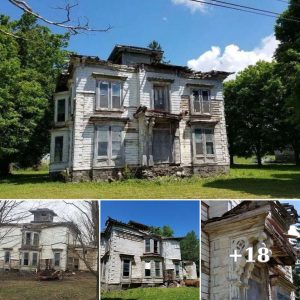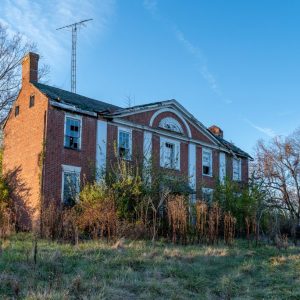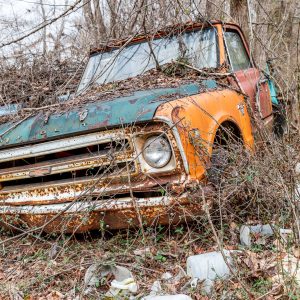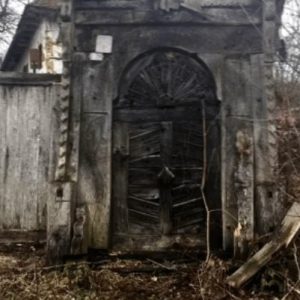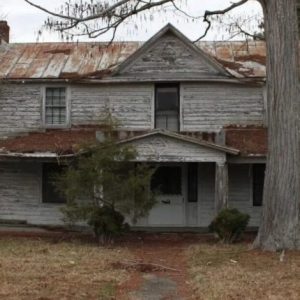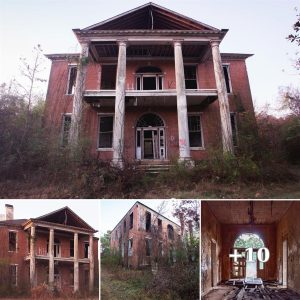The Abandoned Taunton State Hospital (Taunton, MA)
Photographing Taunton State Hospital was one of the most difficult and dangerous expeditions in my photography career. Looking back on it now, it seems like it must have been a dream. Something that incredible couldn’t have actually occurred, and yet I have the proof. Much like the asylum itself, it’s hard to fit your mind around the facts, and yet they remain an incontrovertible reality.
I barely knew Ryan, the person who had offered to guide me through Taunton. Years prior, entry to the abandoned section of Taunton State Hospital had been fairly simple – you could essentially walk right in! The five-alarm fire in 2006 that destroyed a large portion of the administrative section of the hospital changed that. The state of Massachusetts built a fifteen foot, climb-proof fence around the perimeter and installed cameras activated by motion sensors. Because some of the other portions of the campus were still active, Department of Mental Health Police regularly patrolled the grounds. They were serious about keeping people out.
When Ryan had agreed to let me accompany him, it had seemed like a grand adventure, but when I arrived at his house at 2 AM so we could be there by 4, it seemed like it had perhaps not been the greatest idea. A group of kids in their late teens arrived from Long Island, none of whom I knew, and I was starting to wonder if I hadn’t made a terrible mistake. The Long Island group was friendly but loud, and seemed like they’d be more of a liability than anything.
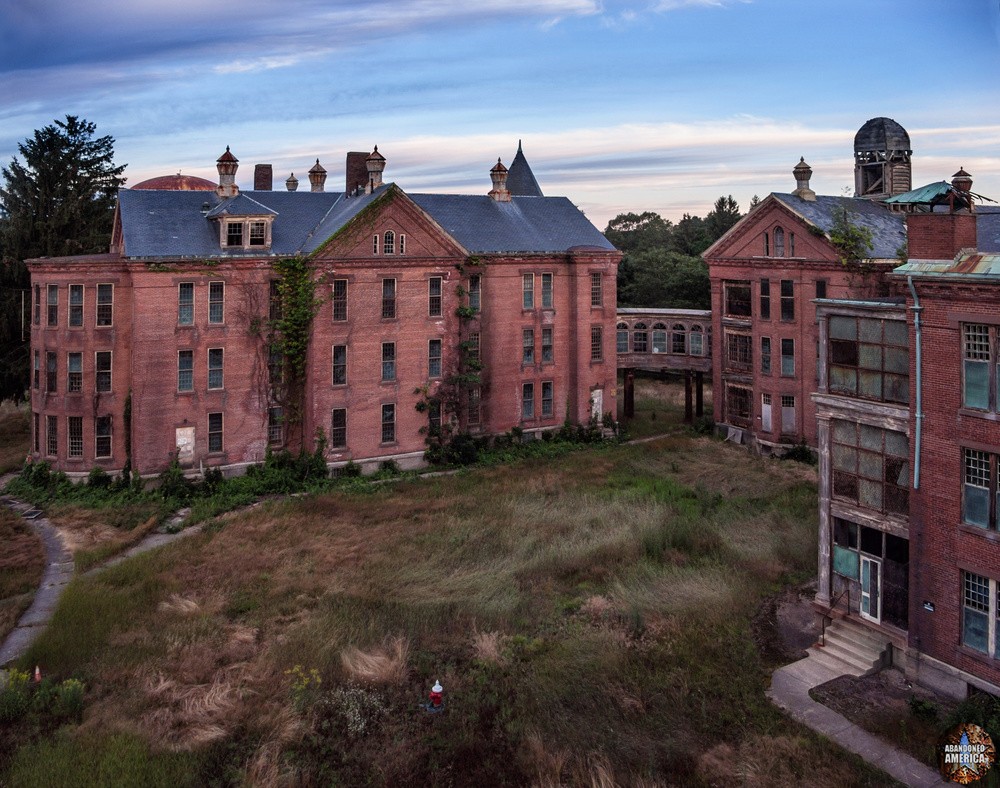 A view of the campus of Taunton State Hospital in 2008.
A view of the campus of Taunton State Hospital in 2008.
Ryan took us in through the still-dark wards and a maze of hallways I couldn’t begin to decipher my way through. Soon we were in an attic, heading up a ladder onto the roof. The steep slate didn’t have anywhere near enough traction to feel safe, and it seemed as though the shingles you stood on would crumble beneath your feet. I didn’t want to go onto it but I didn’t want to miss sunrise from the rooftop either, so I continued the pattern of eschewing safety for photographs. We sat at the base of a cupola that had the names of the original builders carved on the wood inside and watched as the sun rose over the charred remains of what had once been the auditorium and cafeteria. There are certain definitive moments whose magic could never be recreated in any medium; that was definitely one of them. It felt like everything I had ever done had happened solely to lead me to that point, but to this day I couldn’t really articulate why.
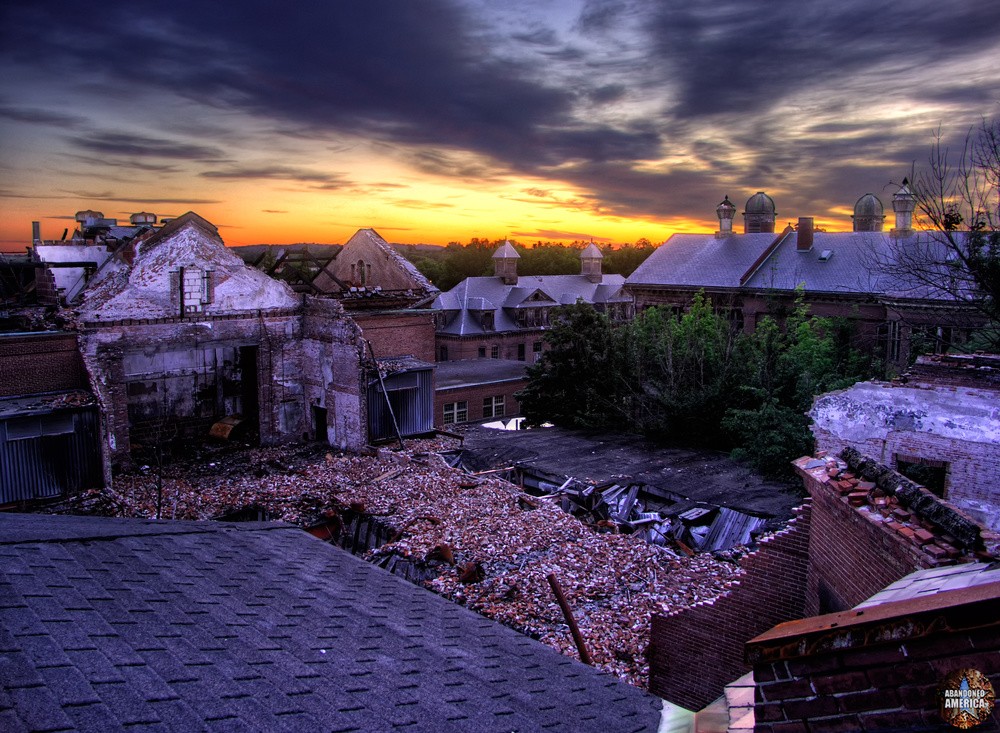 A view of the ruins of Taunton State Hospital’s auditorium from the rooftop at sunrise
A view of the ruins of Taunton State Hospital’s auditorium from the rooftop at sunrise
There would eventually be more than forty buildings that included a bakery, staff dormitories, the chapel, laundry, and theater, the kitchen and dining rooms, parlors, and open-air verandas. The State Lunatic Hospital at Taunton featured such modern amenities as running water, a sewer system, central heat, and a central ventilation system. It was the fifth state hospital to be built on physician Thomas Story Kirkbride’s standardized plan for asylums, in which large wings stretched out from a central administrative structure in a design that was meant to maximize sunlight and fresh air to each ward. The building itself was intended to be curative, and the grounds were to “render it a spot fitted to interest and tranquilize the minds of those who need as well as the soothing influences of external nature as the healing remedies of art.” The dome over the three story administrative building towered 70 feet above the roof and gave a “panoramic view of great beauty, embracing the neighboring town, with its many tokens of busy life, several flourishing villages, the numerous ponds and streams with which the surrounding country abounds, and reaching even to the blue hills of Norfolk Country.” This dome would be one of the first features lost after the hospital’s closure: in 1999 it collapsed under its own weight into the main hospital building, which had at that point been abandoned for nearly a quarter of a century.
When the first patient was admitted on April 7, 1854, the State Lunatic Hospital at Taunton was a progressive facility. While there were ‘strong rooms’ in the basement meant for housing violent patients that were empty but for drains in the floor, those were never used. Most rooms were dormitory style but there were also private rooms. Residents were considered ‘patients’, not ‘inmates’. In many ways it was a time of great optimism. Reformer Dorothea Dix was travelling across the countryside lobbying for construction of asylums to offer a greater standard of care for patients, hoping to keep them from being locked in poorhouses, prisons, and the attics and basements of relatives ill-equipped to deal with their needs. The state hospitals were built with the hope that a better solution for treatment could be found for the mentally ill, and were influenced by the Quakers’ lead of removing the chains from the ill, treating them with conversation and compassion, and allowing them to work in pastoral settings that it was believed would aid in their recovery.
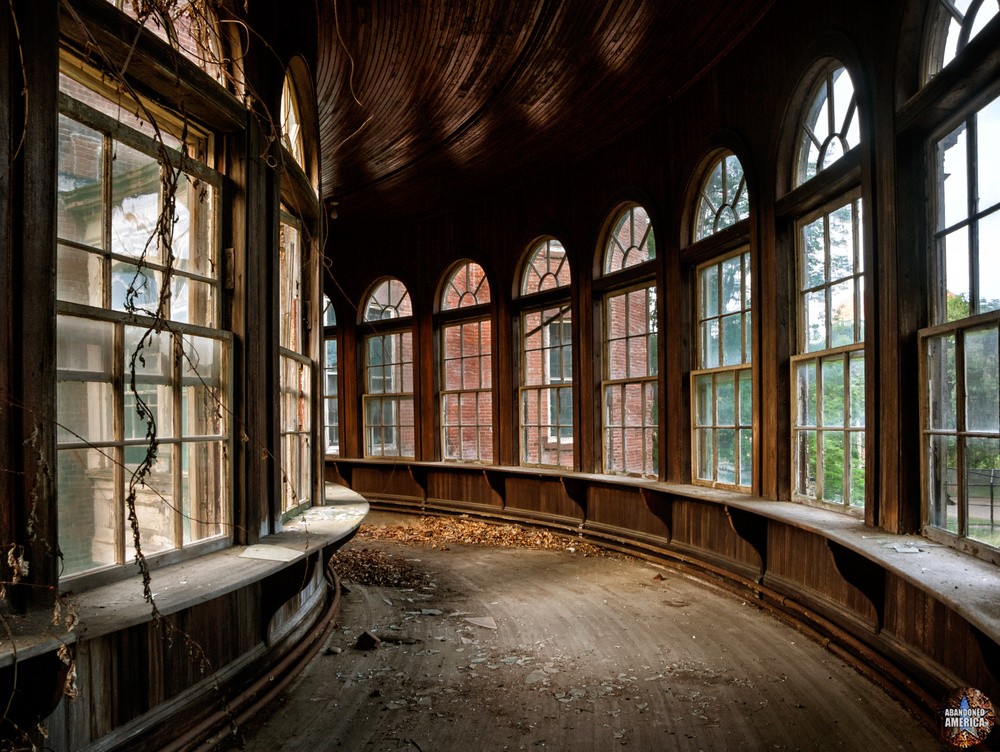 Taunton State Hospital’s cirved hallways were one of its most memorable and beautiful features.
Taunton State Hospital’s cirved hallways were one of its most memorable and beautiful features.
While it is easy to highlight instances in the past where beliefs and practices are rendered archaic by today’s standards, records indicate that in the 1800s efforts were made to address overcrowding via expansion and improvement of the campus. In the 1890s the two signature elevated breezeways were built connecting the main hospital to the new east and west infirmary buildings. A 1915 Trustees Report mentions baseball games, picnics, book donation programs, lectures, dances, and “other entertainments,” and a sincere attempt to welcome journalists and the general community into the buildings “in order that they might carry away and convey to the public individual opinions formed after inspection which would be likely to do away with the old-time prejudices.” The report also mentions “patients have made 2,054 articles exclusive of surgical dressings – of which many more have been made – for the relief of war sufferers in Europe.”
While some of the causes for commitment would seem at best quaint and at worst terribly misguided by present mores, there were certainly patients worthy of it. 23-year-old W. H. Pray was one such patient, whose commitment for murdering a three-year-old child because “he liked to go to funerals, and because the victim’s elder brother had tormented him” was mentioned in a newspaper item titled “Peculiar Freak of an Insane Man.” Several high profile murderers wound up at Taunton. The most famous was Jane Toppan, a nurse who poisoned at least 31 people with morphine and strychnine and is suspected of having murdered up to 70 more. Toppan’s ambition “to have killed more people — helpless people — than any other man or woman who ever lived” was thwarted by her commitment to Taunton State Hospital, where she remained until she died in 1936 at the age of 81. Lizzie Borden is also reputed to have stayed there, but there is no evidence to substantiate this, although she was incarcerated in the city of Taunton’s jail. The Borden Colony, a farm operated by Taunton State Hospital, was called Borden State Hospital during the period when it treated shell shocked soldiers during World War I, which may have also contributed to this apparent misconception. Other notable patients include a man who set fire to a tent at the Musical Circus Summer Theatre during a performance in 1961, a 16-year-old boy admitted for examination after beating a 10-year-old newsboy to death with a rock that same year, and Thomas Sumner, a captain famous for discovering the ‘line of position’ (also known as the Sumner Line) in oceanic navigation.
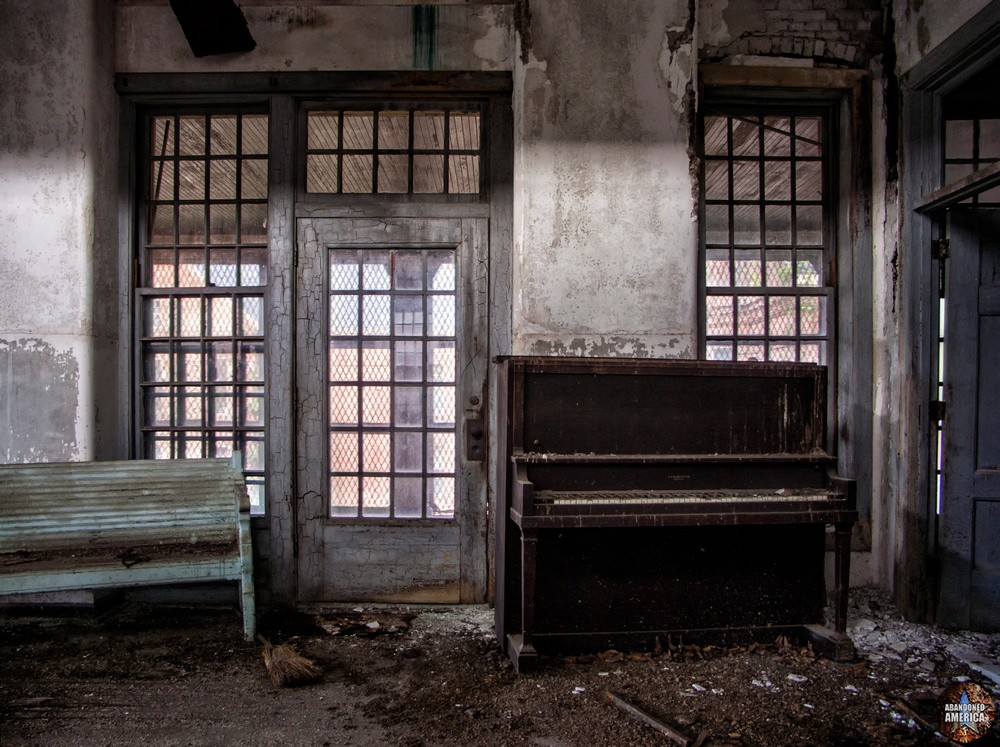 One of Taunton State Hospital’s rotting day rooms, at the end of a wing where the most ill patients were kept
One of Taunton State Hospital’s rotting day rooms, at the end of a wing where the most ill patients were kept
While Eugenics fell sharply from favor after World War II, the overcrowding and poor living conditions at many of the state hospitals did not. Desperate measures to alleviate crowding on the wards and treat illnesses with no known cures included insulin shock treatment, wherein an epileptic fit and subsequent coma were induced by a massive dose of insulin, or hydrotherapy, where a patient was restrained in a tub filled with exceedingly hot or cold water for hours, or even days. Better known treatments included Electroconvulsive Shock Therapy and lobotomies, which involved a rod being inserted through the top of the eye socket to sever the nerve pathways in the prefrontal cortex or simply to scramble the front of the brain. By the time drugs like Thorazine and Haldol were introduced – each with their own nightmarish and permanent side effects – the prevailing winds had shifted. After a horrific botched lobotomy on his sister Rosemary that obliterated her ability to function, John F. Kennedy passed the Community Mental Health Centers Act, which pushed for deinstitutionalization and community care.
Combined with drug-based treatments, deinstitutionalization dramatically reduced the populations at state hospitals, but closures were handled clumsily. In 1975, Taunton’s Assistant Superintendant Paul F. Fletcher resigned along with two other doctors, charging that “Hospital care has been deteriorating for two or three years and some parts of the hospital have already reached the snake pit stage.” The main hospital building was closed that same year. Several outbuildings remain active to this day, including the East Infirmary, two youth service units, two adolescent wards operated by the Department of Youth Services, and wards operated by Taunton State Hospital for long-term care and forensic evaluation.
The main hospital building and West Infirmary were abandoned, and despite being added to the National Register of Historic Places as a historic district in 1994, they were allowed to deteriorate with little effort made to maintain them. In 2012 the Governor announced the remaining buildings would close, a move that was met with fierce resistance from groups like the National Alliance on Mental Illness of Massachusetts. This was a dramatic reversal from the sentiment of one mental health advocate I had met with in the area in 2007, who told me he couldn’t wait until every last state hospital was torn down. As of 2015, it seems like the battle to keep the rest of the facility open has been won – at least for the moment.
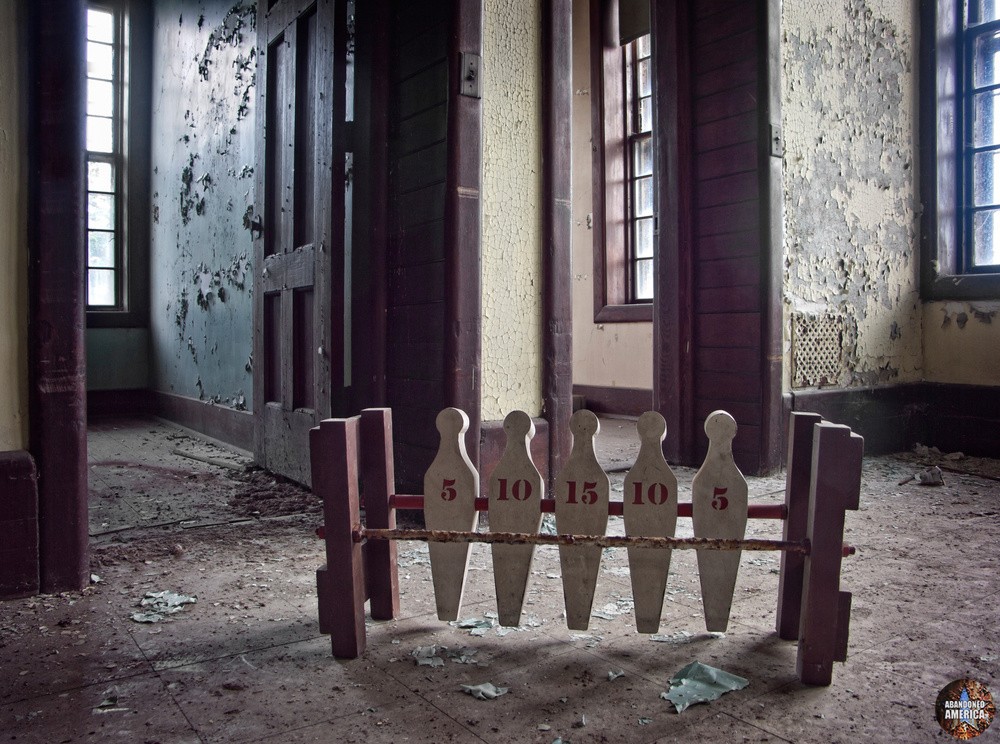 A wooden bowling game left behind in one of Taunton’s abandoned wards
A wooden bowling game left behind in one of Taunton’s abandoned wards
The Long Island group turned out to be much nicer and more adept at photography than I initially gave them credit for. I don’t know what drove them to drive all night to come there. While I wondered about it all day, I never really thought to ask. Maybe I liked not knowing. They all seemed so alive, so content, that perhaps examining the reason would have spoiled it. Our paths crossed at intersecting hallways, and before long they, too, vanished into the void of all things that have passed – another unsolved mystery in a decaying vault full of them.
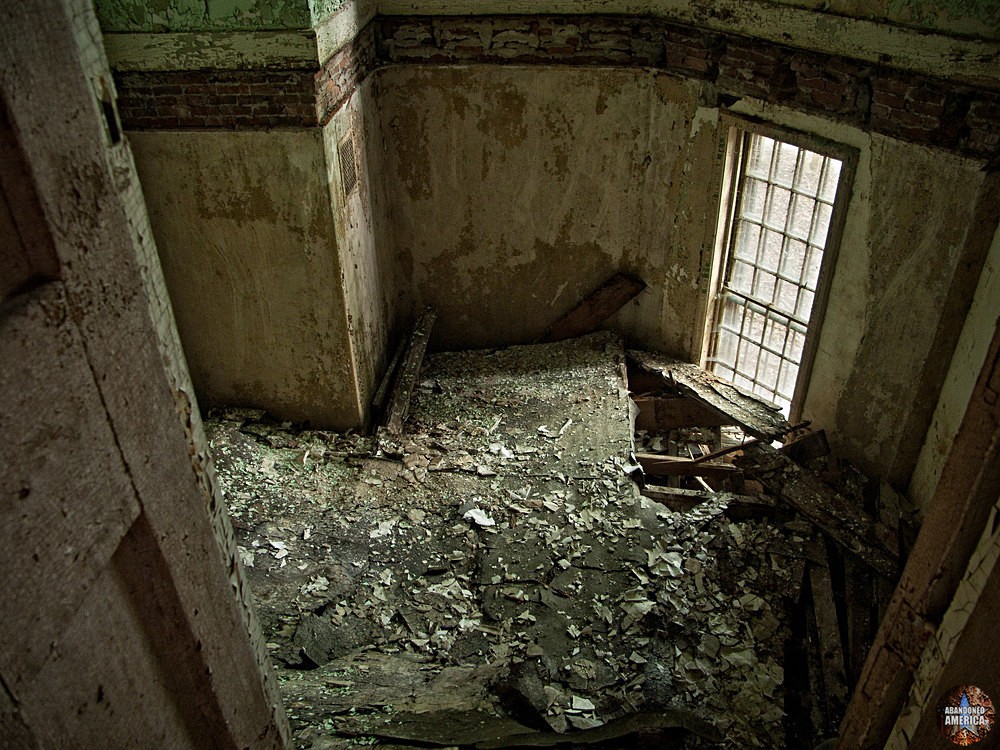 Floor collapses were not uncommon in Taunton; ones like this indicate that they probably happened suddenly as the joists gave out.
Floor collapses were not uncommon in Taunton; ones like this indicate that they probably happened suddenly as the joists gave out.
It’s easy to only focus on the sadness inherent in the wreckage of a place like Taunton State Hospital. When you know the misery in the history of an asylum, and you see only the ruins of what it once was, you sometimes become blinded by the macabre and morose, by thwarted hopes and unchecked corruption. There was something else that lived there, though – something in the brilliant green ivy that worked its way into cracks the way lovers’ fingers entwine, in the softness of the wind or the stillness of untouched afternoon sunlight, or in the way gravity welcomes the falling rafters back to earth. Taunton State Hospital had such beauty – in the sincerely charitable ambitions that built it, in the graceful forms of the architect’s true design, in the hopes of those who believed it could bring a cure for mental illness, and in those who were confined there who stole friendship and dignity from disgrace and neglect. If you can’t see these things, there’s no purpose to trying to preserve a piece of Taunton. Perhaps it was best stated by Taunton State Hospital’s own Superintendant, Arthur V. Goss, in concluding the 1915 Trustees Report: “In spite of discouragements and failures, of difficulties, perplexities and ever increasing complications are we not each and all conscious of progress, and shall we not turn our faces resolutely forward and with renewed energy take up the mighty task before us?” When I was there I didn’t hear the screams of anguish of those who had been confined there, but the serenity of final release, something that in an abstract and inexplicable way proved beyond a doubt to me that nothing great ever really dies.
